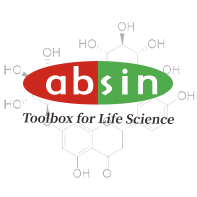Product Details
Product Details
Product Specification
| Usage | 1. Preparation of cell samples: (1) For adherent cells, culture the cells in a six-well plate or other multi-well plate or on a coverslip until 50%-80% full. Overfull cell culture can make it difficult to determine whether mycoplasma contamination is present or not. (2) For suspended cells, centrifuge to precipitate the cells, take a small amount of cells for cell smear, and fully dry them in the air. 2. Hoechst staining solution was diluted 1:10 with PBS (1 volume of Hoechst staining solution was added to 9 volumes of PBS). The diluted Hoechst staining solution should be used within 24 hours. 3. Add an appropriate amount of fixative to fix for 10 to 20 minutes. For one well of a six-well plate, 1 mL of fixative was added. Ensure the fixative adequately covers the sample and never wash the cells prior to fixation. For adherent cells, the culture medium needs to be removed before fixation. 4. Remove the fixing solution and dry it in the air. 5. Add an appropriate amount of Hoechst staining solution diluted 10 times to stain at room temperature for 10 ~ 30min. For one well of a six-well plate, 1 mL of staining solution was added. Ensure that the dyeing solution fully covers the sample, and keep it out of light when dyeing. It can be protected from light with aluminum foil paper. 6. Remove the dyeing solution and dry it in the air. 7. Add the anti-fluorescence quenching sealing solution provided in the kit dropwise, and observe the blue fluorescence under a fluorescence microscope after sealing. Fluorescence microscope observation requires 400 times or 1000 times magnification observation (oil mirror is required). For cell samples without mycoplasma contamination or other prokaryote contamination, only blue fluorescence of the nucleus was observed, and mitochondrial DNA was not stained. Particulate or filamentous blue fluorescence around the nucleus can be observed in cell samples contaminated with mycoplasma. A large amount of particulate or filamentous blue fluorescence can be observed in cells with heavy mycoplasma contamination. In case of bacterial, yeast or mold contamination, although Hoechst staining will also be positive, bacterial, yeast or mold contamination can be observed under an optical microscope, but mycoplasma cannot be observed, so it can be preliminarily distinguished whether it is mycoplasma or other microorganisms. If further identification is necessary, further detection can be carried out by inoculating mycoplasma culture and RT-PCR. |
||||||||||||
| Beilstein | 0 | ||||||||||||
| Appearance | solution | ||||||||||||
| Description |
The mycoplasma staining detection kit can be used for in situ staining detection of mycoplasma or other prokaryotes in cultured cells. It is mainly used to detect whether there is mycoplasma contamination in cultured cells. Components:
|
||||||||||||
| PubChem CID | 0 | ||||||||||||
| General Notes | 1. HoechstThe dyeing solution is DMSO solution, which will solidify into a solid state at 4 °C. It can be melted in an oven at room temperature or 37 °C before use. 2. Hoechst dyeing reagent is harmful to human body, please pay attention to proper protection. 3. The fixative contains glacial acetic acid and has a pungent smell. It should be fixed in the fume hood. 4. Fluorescent dyes all have quenching problems. It is recommended to complete the test on the same day as possible after dyeing. 5. Before detecting mycoplasma, it is best to use antibiotic-free culture medium for 2 to 3 generations, which makes it easier to detect mycoplasma, because some antibiotics can inhibit the growth of mycoplasma. |
||||||||||||
| Storage Temp. | Store at 2 ~ 8 ℃ in the dark from light, and the validity period is 12 months. |


